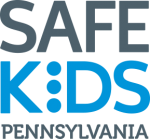
CAR & ROAD SAFETY
Heatstroke Prevention
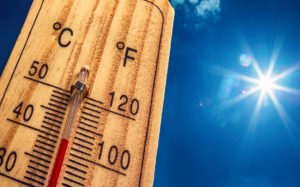 When your body is dehydrated and cannot cool itself (with sweat) then heat illness can occur, which can take a few different forms, like heat cramps (painful muscle spasms often in legs, stomach, arms, or back), heat exhaustion (muscle cramping, faintness or dizziness, rapid heartbeat, emotional instability), or heatstroke. Both heat exhaustion and heatstroke require immediate medical care for treatment.
When your body is dehydrated and cannot cool itself (with sweat) then heat illness can occur, which can take a few different forms, like heat cramps (painful muscle spasms often in legs, stomach, arms, or back), heat exhaustion (muscle cramping, faintness or dizziness, rapid heartbeat, emotional instability), or heatstroke. Both heat exhaustion and heatstroke require immediate medical care for treatment.
While heatstroke can happen to anyone with the “right” conditions, it is the leading cause of non-crash vehicle-related deaths for children. Babies and young children can sometimes sleep so peacefully that we forget they are even in the car, especially when we are tired as well. It can also be tempting to leave a baby alone in a car while we quickly run an errand. The problem is that leaving a child alone in a car can lead to serious injury or death from heatstroke. Young children are particularly at risk, as their bodies heat up three to five times faster than an adult’s. These tragedies are completely preventable.
Safety Tips
- Never leave children in your parked car, even with the windows open.
- Teach children to not play in cars.
- Make sure to lock your vehicle, including doors and trunk, when you are not using it.
- Keep keys and remote entry fobs out of children’s sight and reach.
- Teach kids that trunks are for transporting cargo and are not safe places to play.
- If your child is missing, get help and check swimming pools, vehicles and trunks. If your children are locked in a car, get them out as quickly as possible and dial 911 immediately. Emergency personnel are trained to evaluate and check for signs of heatstroke.
- Make sure that children stay hydrated when playing and exercising.
Reduce the Number of Deaths from Heatstroke: Remember to ACT
- Avoid heatstroke-related injuries and death by never leaving your child alone in a car, even for a minute. It’s not worth the risk!
- Create reminders by putting something in the back of your car next to your child such as a briefcase, a purse or a cell phone that is needed at your final destination. This is especially important if you are not following your normal routine.
- Another suggestion is to have a stuffed animal (or similar toy) that is always in the car seat when empty. When your child is in the car seat, the toy rides in the front as a reminder.
- Take action. If you see a child alone in a car, call 911. Emergency personnel want you to call. They are trained to respond to these situations. One call could save a life.
Know the Signs and Symptoms
In infants and young children, dehydration symptoms include:
- Dry mouth and tongue
- Crying without tears
- No wet diapers for 3 hours or more
- High fever
- Unusual sleepiness or drowsiness
- Irritability
- Eyes that look sunken in
- Sunken soft spot (fontanelle) on the top of infants’ heads
- Less play than usual
- More severe symptoms include the above symptoms as well as excessive sleepiness or fussiness, cool and discolored hands and feet, and extremely little urination (one to two times per day). Any child with these symptoms needs to be seen by a medical professional as soon as possible, as untreated dehydration can lead to serious medical conditions and death.
In older children and adults, dehydration symptoms include:
- Feeling very thirsty
- Dry mouth or skin
- Less urination than usual, or urine that is dark in color
- Feeling tired
- Feeling dizzy
- More severe symptoms may include the above signs as well as confusion, fainting, lack of urination, rapid heartbeat, rapid breathing, and shock. Anyone with these symptoms needs to be seen by a medical professional as soon as possible, as untreated dehydration can lead to serious medical conditions and death.
Heat Cramp Symptoms (can be treated by retreating to a cool place, rehydrating with sports drink to replenish electrolytes, etc.)
- Heavy sweating.
- Painful, brief muscle cramps in areas that are fatigued by heavy work, such as calves, thighs, and shoulders.
- Possible involuntary muscle spasms.
Heat Exhaustion Symptoms (can be alleviated by moving to a cool place, rehydrating, using cool and wet cloths to lower body temperature, and may require medical treatment.)
- Heat Cramps.
- Heavy Sweating.
- Fast and weak pulse.
- Nausea or vomiting.
- Tiredness or weakness.
- Dizziness.
- Headache.
- Fainting (passing out).
Heatstroke Symptoms (requires immediate medical attention -call 911 before moving the person to a cool location and attempting to lower body temperature with cool and wet cloths, but do not make them drink anything).
- High body temperature (103°F/40°C or higher)
- Hot, red, dry or damp skin.
- Fast and strong pulse.
- Headache.
- Dizziness.
- Nausea.
- Confusion.
- Losing consciousness (passing out).


